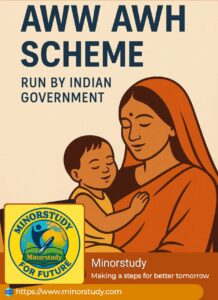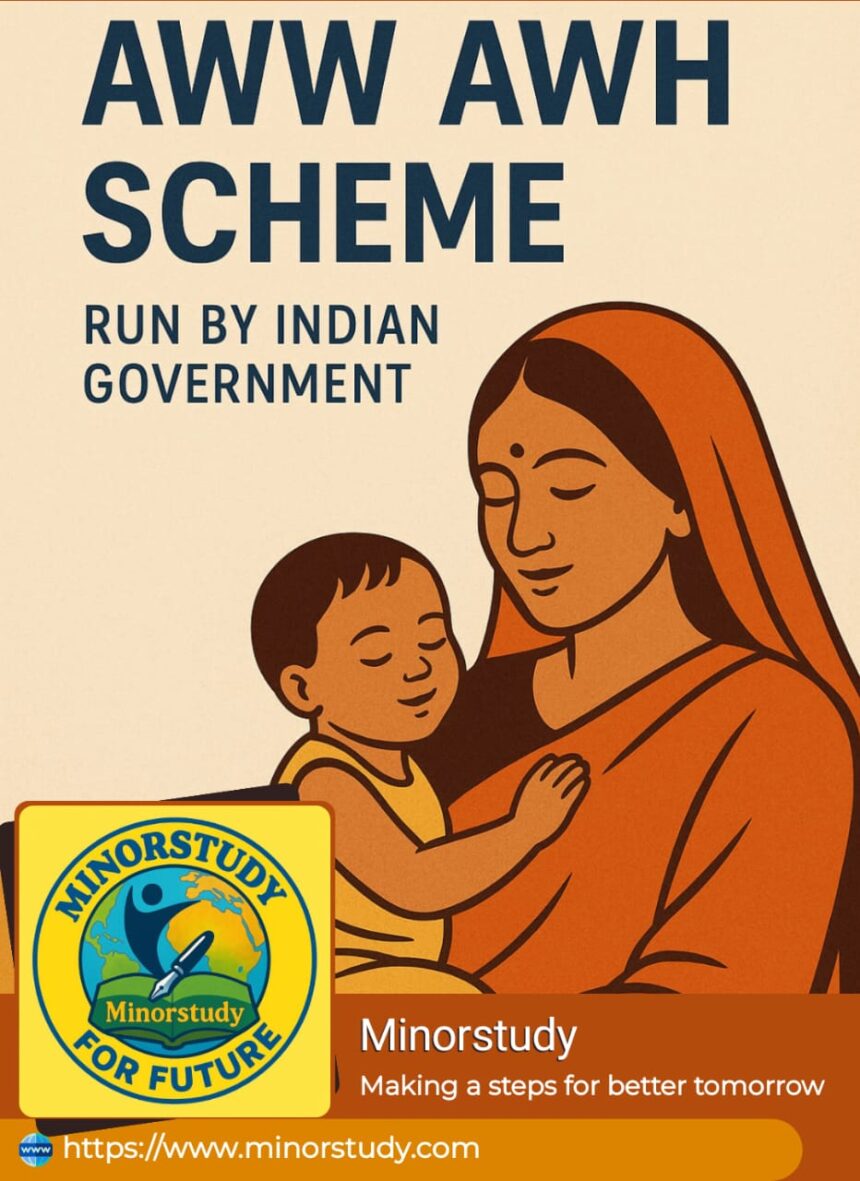All You Need to Know About the AWW AWH Scheme: History, Facts, Timeline, FAQs, and Its Deep Impact on Society
AWW AWH Scheme: India, a country with diverse social strata, has often faced the challenge of reaching its underprivileged population with essential services. One shining example of targeted welfare is the AWW AWH Scheme, a grassroots government initiative empowering women and nurturing children from economically disadvantaged backgrounds. But what is this scheme? Why is it important? And how does it impact our daily lives?
Let’s dive deep into the origins, evolution, and relevance of this life-transforming scheme in a human-friendly and emotionally relatable way.
🌸 What is the AWW AWH Scheme?
The AWW AWH Scheme stands for Anganwadi Workers (AWWs) and Anganwadi Helpers (AWHs) scheme, part of the Integrated Child Development Services (ICDS) under the Ministry of Women and Child Development, Government of India.
This scheme provides employment opportunities to rural women as Anganwadi Workers and Helpers, who are responsible for implementing early childhood care and education, nutrition programs, and basic health awareness at the grassroots level.

📜 History of the AWW AWH Scheme
Launched in 1975, the ICDS program was initiated to combat malnutrition, health issues, and lack of pre-school education among rural children and women.
The role of AWWs and AWHs was conceptualized as community-based voluntary workers who would bridge the gap between the government and the people.
Over the decades, their roles expanded from nutrition and health delivery to early education, counseling, and even COVID-19 awareness.
Important Milestones:
| Year | Event |
|---|---|
| 1975 | ICDS launched in 33 community development blocks |
| 1980s | Gradual expansion to more districts |
| 2005 | Universalization of ICDS under UPA Government |
| 2018 | Introduction of POSHAN Abhiyaan for nutritional improvements |
| 2021 | Digital transformation through POSHAN Tracker app |
| 2023 | Further revision in honorariums and recognition of AWW/AWH as crucial frontline workers |
🌟 Significance of AWW AWH Scheme
1. Women Empowerment
The scheme provides employment and social respect to over 25 lakh women across India, especially in rural and tribal belts. It boosts financial independence and decision-making power within families.
2. Child Development
AWWs ensure children aged 0-6 receive proper nutrition, vaccination, and pre-primary education. They are the first teachers in many rural children’s lives.
3. Healthcare Access
AWWs and AWHs work alongside ASHA workers to deliver basic healthcare, vaccinations, anemia screening, and maternal care—especially crucial in remote areas.
4. Nutrition Awareness
Their roles are central to programs like POSHAN Abhiyaan, which fights malnutrition and anemia.
💡 Key Facts About the AWW AWH Scheme
Largest grassroots employment program for women in the world.
Each AWW covers around 1000 beneficiaries including children and pregnant/lactating mothers.
The government provides honorarium, not salary, making it a semi-volunteer role.
AWWs undergo rigorous training and orientation modules before taking charge.
POSHAN Tracker app launched in 2021 allows digital monitoring of services.
AWWs also help in disaster relief, census, election duties, and more.
They act as change agents, spreading awareness about health, education, sanitation, and women’s rights.
📅 Timeline of Key Developments
1975: Launch of ICDS pilot
1990s: Expansion under World Bank support
2006: National Plan for Strengthening Anganwadi Centers
2018: Introduction of POSHAN Abhiyaan
2020: AWWs frontline in COVID-19 response
2021: Rollout of POSHAN Tracker
2023: Policy revision with increase in honorarium and digital upskilling

🤔 Frequently Asked Questions (FAQs)
❓ Who can become an AWW or AWH?
Any literate woman (preferably 10th pass for AWW and 8th for AWH) from the local community can apply through the local government or panchayat.
❓ Is this a government job?
Technically no. It is an honorarium-based post and not a permanent government job. However, AWWs are eligible for some government benefits.
❓ What’s the difference between AWW and AWH?
AWW (Worker): Primary in charge of the center and record-keeping.
AWH (Helper): Assists in cooking, cleaning, and support services.
❓ How much are they paid?
As of 2023:
AWW: ₹10,000 per month
AWH: ₹5,500 per month (varies state-wise)
❓ Are they trained?
Yes! There are job orientation programs and in-service training sessions conducted regularly.
🎉 How Do We Observe or Appreciate Their Work?
Even though no official “AWW AWH Day” exists yet, POSHAN Maah (Nutrition Month in September) honors their contributions. Many NGOs, schools, and local governments celebrate Anganwadi workers through felicitation, community meetings, and awareness drives.
A simple way to honor them in our daily lives is by:
Thanking them during your visits
Sharing their stories on social media
Educating others about their contributions
Supporting their efforts with donations (where applicable)
❤️ Why Is It Important in Our Daily Life?
We often overlook the invisible efforts behind a healthy child or a safe pregnancy in villages. AWWs and AWHs work in heat, rain, and social challenges to ensure:
Pregnant women get iron supplements
Infants receive timely vaccines
Girls are not malnourished
Children learn rhymes and letters
Mothers know how to breastfeed properly
They’re not just workers—they are pillars of preventive health and early education.
🧠 Impact on Society
Reduces Infant and Maternal Mortality through early interventions.
Improves Literacy Rates by introducing children to preschool learning.
Boosts Social Awareness on issues like sanitation, gender equality, and birth control.
Acts as a Safety Net for millions who otherwise remain disconnected from state services.
🎈 Wishing and Honoring AWWs and AWHs
If you’re organizing a celebration or just want to send a kind message, here are some sample wishes:
“To the angels of the village, thank you for feeding minds and hearts every day. Happy Anganwadi Appreciation!”
“You are the first light of education and the first shield of nutrition for our children. We salute your dedication!”
📌 Important Takeaways
AWW and AWH roles are vital in India’s social development landscape.
They contribute not only to health and education but also to women empowerment and employment.
The scheme has evolved with digital tools, training, and increased support.
We need more public awareness to demand better pay, working conditions, and recognition for them.
🧭 Conclusion: More Than Just a Scheme—A Lifeline for Millions
The AWW AWH Scheme is not just a government initiative—it is the heartbeat of rural India’s social development structure. These women stand at the intersection of hope, care, and education. They are the unsung heroines who serve our children and mothers selflessly.
In a world where public servants are often criticized, these women quietly deliver daily miracles—one healthy meal, one educated child, one protected mother at a time.
If we truly care about the future of India, let’s start by acknowledging and empowering the very people nurturing its foundation.









